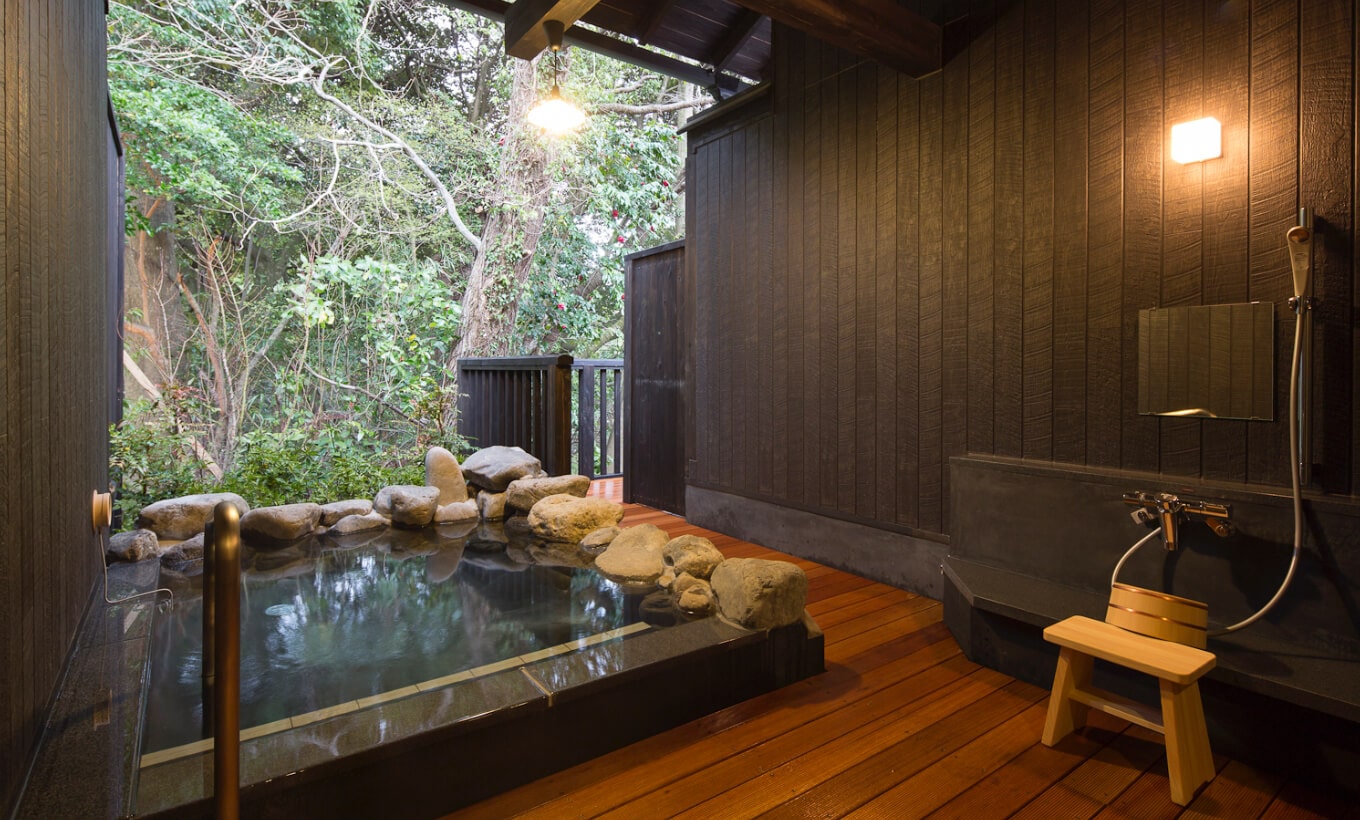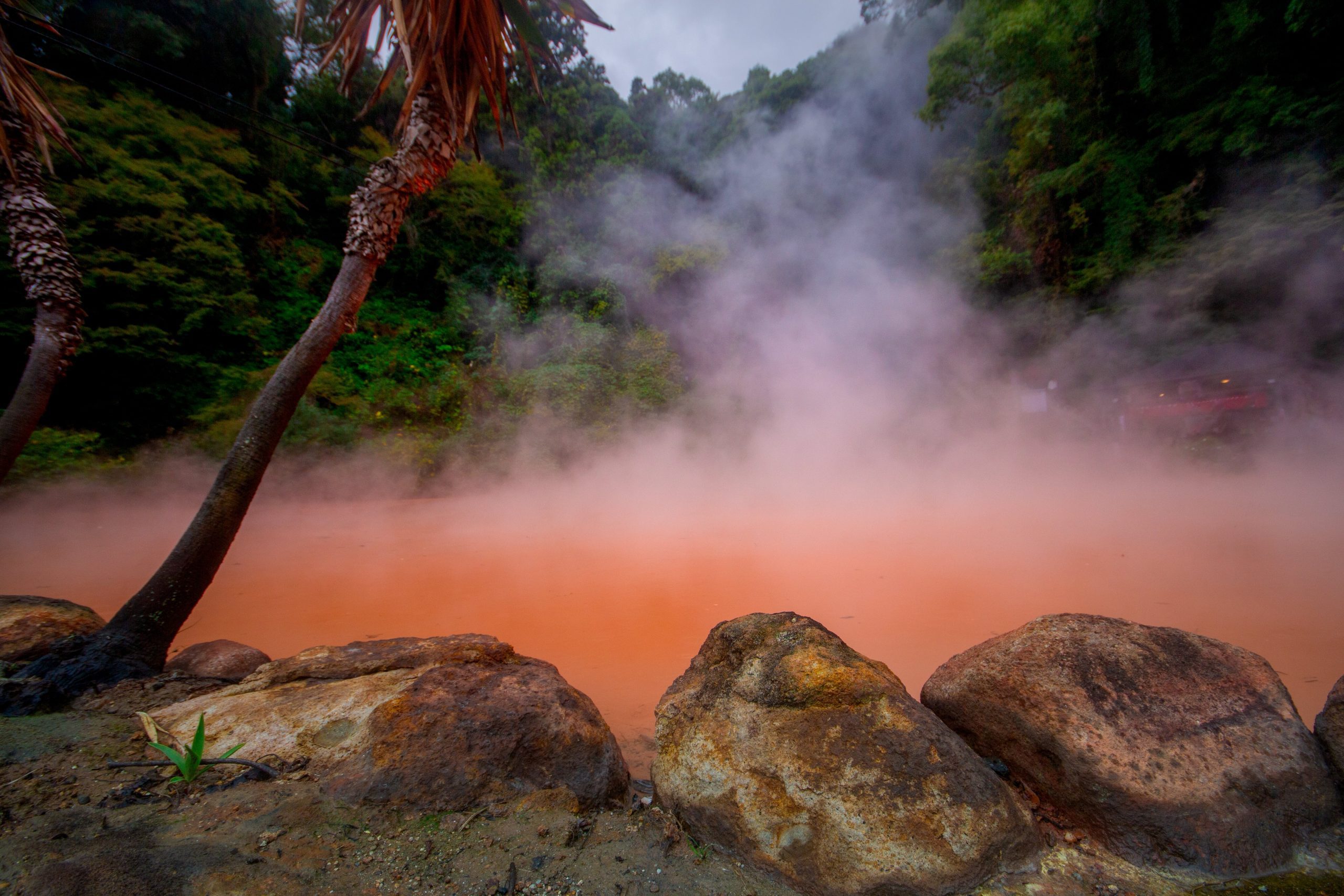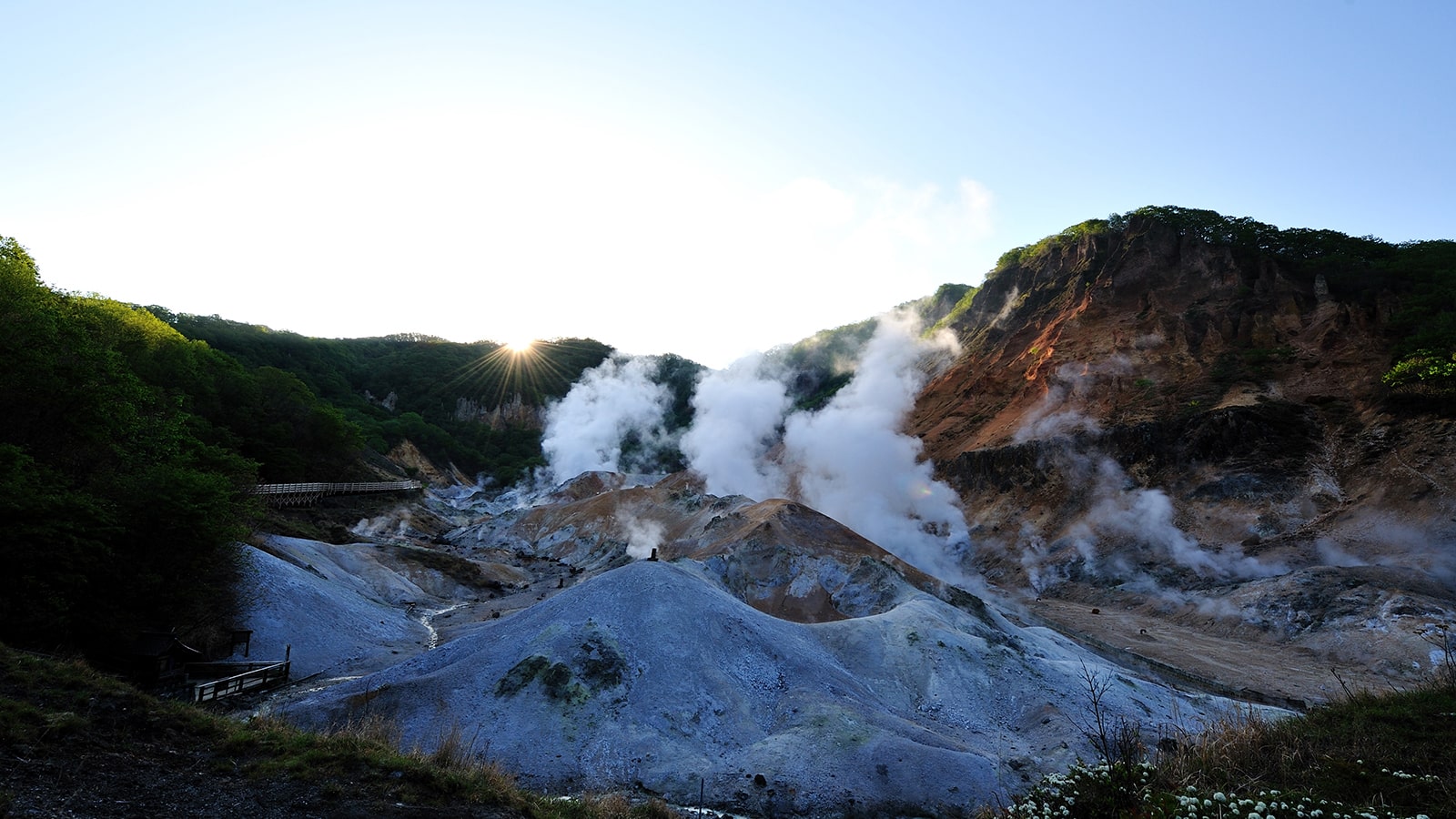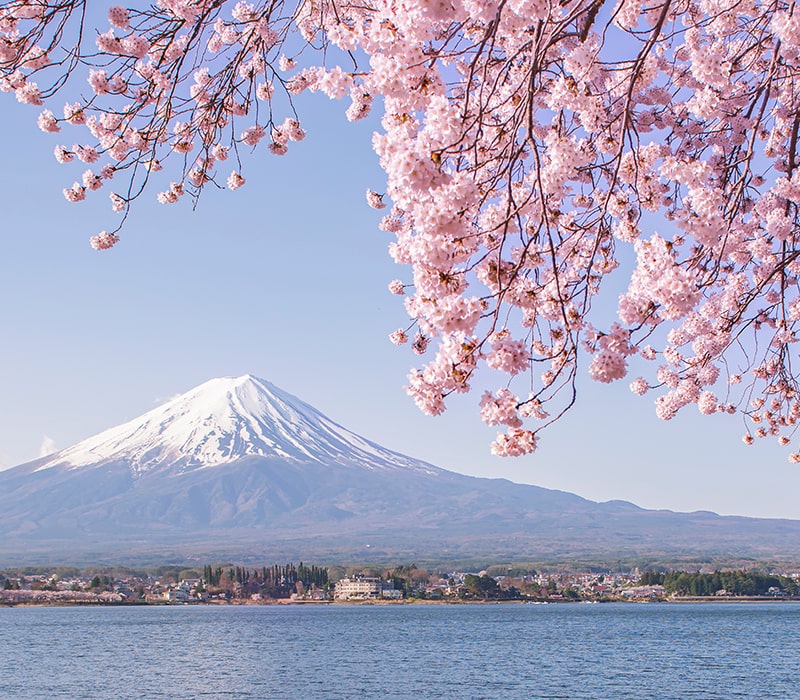Japan, a country known for its rich cultural heritage and natural beauty, is also famed for its hot springs (温泉, onsen). With thousands of hot springs scattered across the Japanese archipelago, onsen have become a symbol of relaxation and rejuvenation. Beyond a mere bathing experience, onsens offer a profound cultural journey, a chance to unwind and escape the hustle and bustle of the outside world. In this guide, let Designer Journeys bring you into the magical world of Japanese hot springs, exploring their significance, the different types, onsen etiquette, and the best destinations to experience this unique cultural gem.
Post Contents
Cultural Immersion: Hot Springs in Japan
What is an Onsen?
Onsen is a natural hot spring in Japan, legally defined by its mineral composition and temperature. Found from Hokkaido to the Shikoku region, these bathing facilities can be part of public baths, luxury ryokan inns, or scenic outdoor onsen with views of Mount Fuji. Bathing is done in full nudity (no swimsuits), following onsen etiquette to ensure comfort and respect for all visitors.
History of Hot Springs in Japan
Throughout the history of Japan, hot springs, known as ‘onsen’ in Japanese, have held significant cultural importance. The first documented hot spring in Japan, Dogo Onsen in Ehime Prefecture, dates back to 712. Many of Japan’s hot springs were initially discovered by ancient hunters during their hunting excursions.
Renowned for their natural beauty and distinctiveness, hot springs have traditionally been revered as a divine gift. Their popularity surged with the introduction of Buddhism to Japan in 552 AD, as bathing was considered a means of purification and cleansing in Buddhist practice. Despite efforts by Christian missionaries around the 1550s to discourage the practice of bathing in hot springs, citing it as offensive, their attempts proved futile, as Japan’s profound affection for onsen had already become deeply entrenched in the culture.

History of Japanese hot springs
In 1709, the healing properties of hot springs were discovered, which led to the eventual commercialisation of hot springs. Today, going to the hot springs remains a beloved activity for Japanese people, who recognise the benefits of health, relaxation, and enjoyment that only a dip in a hot spring offers.
Health Benefits of Onsen Water
Bathing in hot springs is not just a leisure activity; it also offers numerous health benefits. The mineral-rich waters are known for their therapeutic properties, including:
- Improving Blood Circulation: The warm water helps to dilate blood vessels, enhancing blood flow and promoting overall cardiovascular health.
- Relieving Pain and Muscle Tension: The heat and minerals can alleviate muscle and joint pain, making onsen a popular choice for those with arthritis or sports injuries.
- Skin Health: The minerals in the water can improve skin conditions, making the skin softer and smoother.
- Stress Relief: The relaxing environment and warm water help to reduce stress and promote mental well-being.
Are you planning a trip to Japan?
Browse our gallery of fully customisable Japan itineraries and connect with one of our expert Local Designers to get you started! Designer Journeys can design your ultimate experience and offers hand-crafted itineraries built by experienced Local Designers who have first-hand knowledge of the destination.
Types of Hot Springs
Natural Hot Springs
Natural hot springs are formed by geothermal activity. As groundwater is heated by the Earth’s magma, it rises to the surface, creating pools of hot water rich in minerals. These mineral-rich waters are believed to have various health benefits, from improving blood circulation to relieving muscle pain.

Natural hot spring in Beppu.
Sand Baths and Unique Hot Springs
Japan also boasts unique hot springs, such as sand baths, where visitors are buried in naturally heated sand. An example is found in Ibusuki, Kagoshima Prefecture, where the hot sand baths are a popular attraction.
Another unique experience is the “Hell Valley” (Jigokudani) in Noboribetsu, Hokkaido, where the landscape is dotted with steaming vents and boiling hot springs, providing a surreal and otherworldly experience.

Watching Snow Monkey in Jigokudani is a unique experience in Japan.
Onsen Etiquette: 6 Steps for First-Timers
A visit to a Japanese onsen can be one of the most relaxing and culturally enriching experiences of your trip to Japan — but it’s also something that comes with traditions that have been followed for centuries. For many first-time visitors, the idea of full nudity and shared bathing facilities might feel daunting. Don’t worry. With a little understanding of onsen etiquette, you’ll be able to soak with confidence and enjoy the true spirit of Japanese culture.
Here’s a step-by-step guide so you can enjoy hot spring baths like a local.
- Shower Before Bathing: Cleanliness is the cornerstone of any onsen visit. Before entering the bathing area, head to the washing area where you’ll find low stools, a small bucket, and a hand-held shower. This ritual not only ensures the shared bath stays clean but also helps your skin adjust to the hot temperature.
- No Clothing or Swimwear: In Japanese onsen, wearing swimsuits or any form of clothing in the water is not allowed. Bathing is done in full nudity, with only a small towel for modesty. You can use this towel to cover yourself when walking between the changing rooms and the open-air baths or indoor baths.
- Enter Slowly and Mindfully: The mineral-rich onsen water is often quite hot — sometimes between 40°C and 43°C. Take your time to ease in, allowing your body to adjust to the temperature. Start by dipping your legs in and then gradually immerse yourself. This helps avoid a sudden spike in heart rate and allows you to fully appreciate the healing properties and health benefits of the bath.
- Keep Towels Out of the Water: One of the most important rules is that your small towel stays out of the bathing area. Locals often fold it neatly and place it on their head, which also helps regulate body temperature. If you don’t want to do that, you can leave it on the edge of the bath. The reason? It keeps the hot spring water pure and free from detergent or bacteria that might be on the towel.
- Maintain a Peaceful Atmosphere: Hot spring enthusiasts come for quiet reflection, not loud chatter. Keep your voice low, avoid splashing, and be mindful of other bathers’ personal space. Onsen operators work hard to create a tranquil environment, and it’s part of the onsen etiquette to help preserve that.
- Rinse Lightly Afterwards (Optional): Some visitors choose to give themselves a light rinse at the shower area before leaving, but many prefer to let the minerals remain on the skin for continued therapeutic effect. The mineral composition of onsen water can help maintain warmth in the body long after you’ve left the bath, aiding blood circulation and prolonging the relaxing getaway feeling.
Tip: If you’re visiting a private onsen or family bath, the etiquette is generally the same, but you’ll have the space to yourself — perfect for couples, families, or those who prefer more privacy.
Imagine soaking in steaming hot spring water as snow falls softly on the surrounding landscape, or cherry blossoms sway in the breeze above open-air baths. Whether you dream of a relaxing getaway in the mountains, a luxurious stay at hot spring resorts, or a quick escape from Tokyo, Japanese onsen experiences will leave you refreshed in both body and mind.
The Most Popular Onsen Towns in Japan (2025 Update)
1. Hakone Onsen – Kanagawa Prefecture
Just a short trip from Tokyo, Hakone Onsen is one of the most easily accessible hot spring resorts in Japan. With indoor baths, open-air baths, and private onsen offering breathtaking views of Mount Fuji, it’s a favourite for both first-time visitors and seasoned onsen travellers. Hakone also offers a wealth of attractions — from art museums to volcanic landscapes — making it a perfect mix of sightseeing and soaking.

Private open-air baths in Hakone Yuryo Onsen.
Image source: Hakone Yuryo
2. Kusatsu Onsen – Gunma Prefecture
Often ranked among Japan’s top three onsens, Kusatsu Onsen is celebrated for its high-acidity sulphuric onsen water, believed to be among the most effective for skin health and muscle recovery. At the heart of the town is the Yubatake, or “hot water field,” where steaming hot water gushes from the earth in dramatic fashion. Surrounding the bathing area are charming streets lined with ryokan, public baths, and seasonal festivals, making it a year-round relaxing getaway.

Kusatsu Onsen has wonderful views with high-quality hot spring water.
Design your perfect Japan trip today!
Work with your expert local travel designer to customise your itinerary so it is exactly what you want from a Japan trip. Get exclusive experiences, top-rated restaurants, and hotels that fit your interests.
3. Arima Onsen – Hyogo Prefecture
Another gem in Hyogo Prefecture, Arima Onsen is one of Japan’s oldest and most famous hot spring resorts, with a long history that spans over a millennium. Known for its two distinct types of hot spring water: kinsen (gold spring) and ginsen (silver spring), Arima offers a luxurious onsen experience.

Arima Onsen is one of the oldest hot springs in Japan.
The Kinsen water is rich in iron and salt, giving it a reddish-brown hue and a distinctive metallic taste. It is known for its therapeutic benefits, particularly for muscle pain and fatigue. The Ginsen water, on the other hand, is clear and contains radium and carbonate, believed to help alleviate various skin conditions and promote overall wellness.
4. Kinosaki Onsen – Hyogo Prefecture
Charming and steeped in tradition, Kinosaki Onsen is famous for its seven historic public baths and the custom of strolling between them in a yukata. The town’s mineral composition — primarily sodium chloride-rich hot spring water — is said to improve blood circulation and keep you warm long after you’ve left the bath. The streets, lined with willow trees and cherry trees, make for a romantic and photogenic relaxing getaway in every season.

Kinosaki Onsen on Spring Cherry Blossoms season.
5. Beppu & Yufuin – Oita Prefecture
In Oita Prefecture on Kyushu island (with the Shikoku region only a short journey away), Beppu Onsen is famous for its “Hells of Beppu” — dramatic hot springs in vivid colours, often too hot for bathing but spectacular to see. Beyond the sightseeing, Beppu offers mud baths, sand baths, and steam baths, while nearby Yufuin charms visitors with luxury hotels, boutique shops, and stunning views of Mount Yufu. Together, they offer one of Japan’s richest bathing experiences.

Beppu Onsen is famous for its dramatic hot springs in vivid colours.
6. Noboribetsu Onsen – Hokkaido
The crown jewel of Hokkaido’s hot spring resorts, Noboribetsu Onsen is famous for its mineral composition and variety of onsen water types, sourced from the volcanic Jigokudani, or “Hell Valley.” The landscape itself is part of the attraction — steaming vents, bubbling ponds, and rugged terrain make it a dramatic backdrop for a soak. Each mineral type is believed to have distinct healing properties, from soothing skin to easing muscle pain, making Noboribetsu a favourite for wellness-focused travellers.

Noboribetsu Onsen is famous for its mineral composition and variety of onsen water types.
Image source: Noboribetsu Onsen
Planning Your Onsen Trip
When planning a trip to enjoy hot springs in Japan, consider the following tips:
- Research: Look into the different types of onsen and what each offers in terms of scenery, water quality, and health benefits.
- When to go: Winter for snow, spring for cherry trees, autumn for colourful leaves.
- Regional gems: Shizuoka Prefecture (near Mount Fuji), Nagano Prefecture (mountain resorts), Kumamoto Prefecture (Kyushu island), Akita Prefecture (northern escapes).
- Accommodation: Staying in traditional Japanese inns (ryokan) enhances the onsen experience. These inns offer tatami rooms, kaiseki (multi-course) meals, and often private onsen.
- Day Trips: If you’re short on time, many onsen towns offer day trip options from major cities like Tokyo and Kyoto.
F.A.Qs
What are hot springs in Japan called?
They’re called onsen, meaning “hot spring” in Japanese, and must meet strict standards for mineral composition and temperature.
Do you wear clothes in an onsen?
No. Full nudity is required, but modesty is maintained with a small towel.
Can foreigners go to hot springs in Japan?
Yes. Most onsen welcome foreign visitors, though some bathing facilities restrict tattoos. Private or family baths are an option.
Are onsen mixed gender?
Most are gender-separated, but some unique hot springs and rural bathing areas offer mixed-gender bathing.
Don’t Miss Our Exclusive Offers! Subscribe Today!
For the ultimate travel inspiration, local insight straight from our expert Local Designers and exclusive offers you won’t find anywhere else from Designer Journeys, sign up today! Don’t miss out.
Japan’s hot springs are more than just a place to bathe; they are a deep-seated cultural tradition that offers relaxation, healing, and a connection to nature. Whether you’re visiting a famous resort like Kusatsu Onsen, exploring the historic baths of Dogo Onsen, or enjoying the scenic beauty of onsen towns near Mount Fuji, the experience is sure to be unforgettable. So, pack your yukata, embrace the onsen culture, and embark on a journey to discover the best of Japan’s hot spring treasures.





